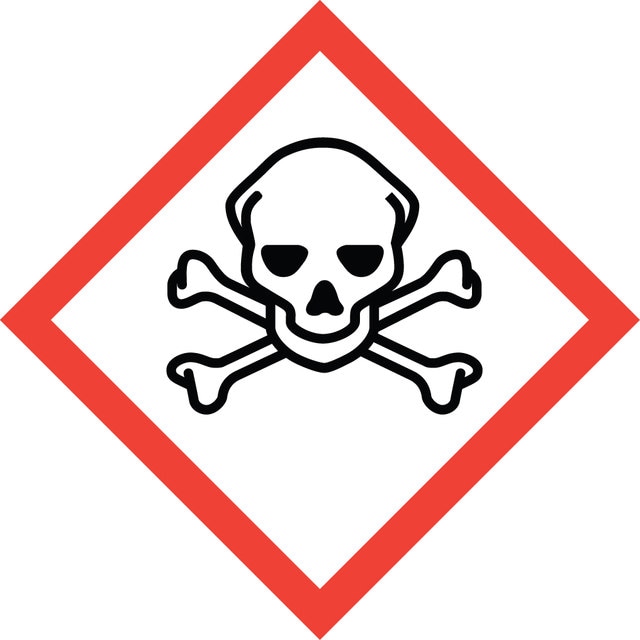Sign In to View Organizational & Contract Pricing
Select a Size
About This Item
Linear Formula:
CH3CH(OH)CH2Cl+CH3CHClCH2OH
CAS Number:
Molecular Weight:
94.54
Beilstein:
773653
EC Number:
MDL number:
UNSPSC Code:
12352100
PubChem Substance ID:
NACRES:
NA.22
Assay
70%
impurities
<25% 2-chloro-1-propanol
refractive index
n20/D 1.439 (lit.)
bp
126-127 °C (lit.)
density
1.111 g/mL at 25 °C (lit.)
functional group
chloro
hydroxyl
SMILES string
CC(O)CCl
InChI
1S/C3H7ClO/c1-3(5)2-4/h3,5H,2H2,1H3
InChI key
YYTSGNJTASLUOY-UHFFFAOYSA-N
Looking for similar products? Visit Product Comparison Guide
General description
1-Chloro-2-propanol is formed as an intermediate during the degradation of meso-bis-(1-chloro-2-propyl)ether by Rhodococcus sp. strain DTB.
Application
1-Chloro-2-propanol has been used as:
- chemical intermediate for the manufacture of propylene oxide, a starting material for production of polyurethane polyols and propylene glycol
- as α,β-halohydrin standard during the enzymatic synthesis of α,β-halohydrins from gaseous alkenes
Signal Word
Danger
Hazard Statements
Precautionary Statements
Hazard Classifications
Acute Tox. 3 Inhalation - Acute Tox. 3 Oral - Eye Irrit. 2 - Flam. Liq. 3 - Skin Irrit. 2 - STOT SE 3
Target Organs
Respiratory system
Storage Class Code
3 - Flammable liquids
WGK
WGK 3
Flash Point(F)
125.6 °F - closed cup
Flash Point(C)
52 °C - closed cup
Personal Protective Equipment
dust mask type N95 (US), Eyeshields, Gloves
Regulatory Information
危险化学品
This item has
Choose from one of the most recent versions:
Already Own This Product?
Find documentation for the products that you have recently purchased in the Document Library.
J Geigert et al.
Applied and environmental microbiology, 45(2), 366-374 (1983-02-01)
The enzymatic synthesis of alpha,beta-halohydrins from gaseous alkenes is described. The enzymatic reaction required an alkene, a halide ion, dilute hydrogen peroxide, and a haloperoxidase enzyme. A wide range of gaseous alkenes were suitable for this reaction, including those containing
Leif-Alexander Garbe et al.
FEMS microbiology ecology, 55(1), 113-121 (2006-01-20)
Rhodococcus sp. strain DTB (DSM 44534) was grown on a mixture of (R,R)-, (S,S)- and meso-bis-(1-chloro-2-propyl) ether (BCPE) as the sole source of carbon and energy. During BCPE degradation 1'-chloro-2'-propyl-3-chloro-2-prop-1-enyl-ether (DVE), 1-chloro-2-propanol and chloroacetone intermediates were formed. The BCPE or
R W Biles et al.
Fundamental and applied toxicology : official journal of the Society of Toxicology, 3(1), 27-33 (1983-01-01)
A 72:25 mixture of 1-chloro-2-propanol and 2-chloro-1-propanol was tested for genetic activity in a battery of short term tests. Chloropropanol was tested over a dose range of 527-167,250 micrograms/plate in the Salmonella/mammalian microsome mutagenicity assay. A dose dependent mutagenic response
A R Jones et al.
Xenobiotica; the fate of foreign compounds in biological systems, 10(11), 835-846 (1980-11-01)
1. The metabolism of 1,2-dichloropropane in the rat has been investigated. The major urinary metabolite has been isolated and identified as N-acetyl-S-(2-hydroxypropyl)cysteine. Two minor metabolites of 1,2-dichloropropane have been identified as beta-chlorolactate and N-acetyl-S-(2,3-dihydroxypropyl)cysteine. 2. The fate of 1-chloro-2-hydroxypropane, a
Reproductive toxicology. 1-Chloro-2-propanol.
Environmental health perspectives, 105 Suppl 1, 291-292 (1997-02-01)
Our team of scientists has experience in all areas of research including Life Science, Material Science, Chemical Synthesis, Chromatography, Analytical and many others.
Contact Technical Service
